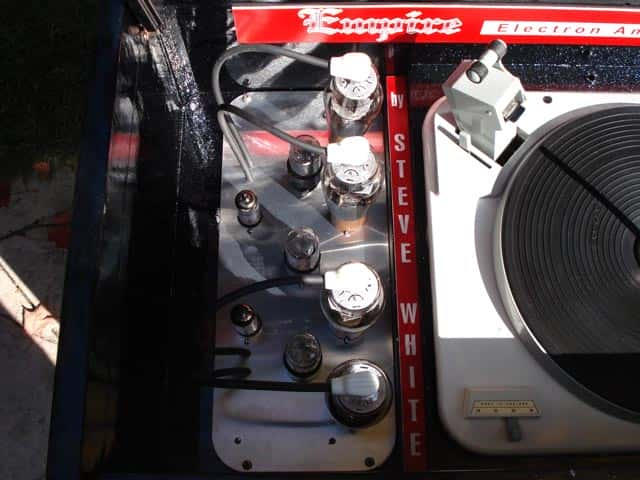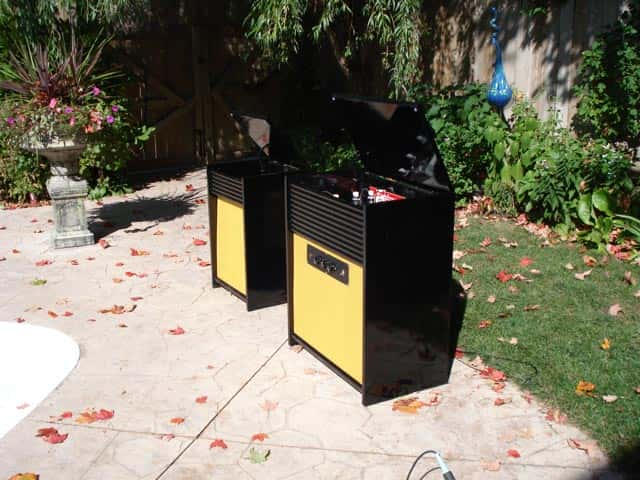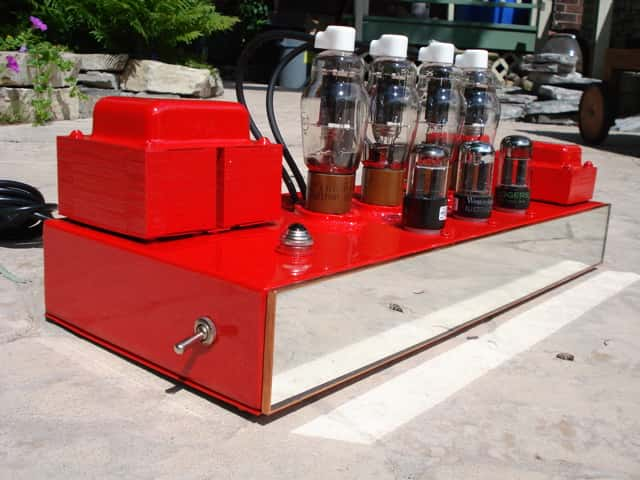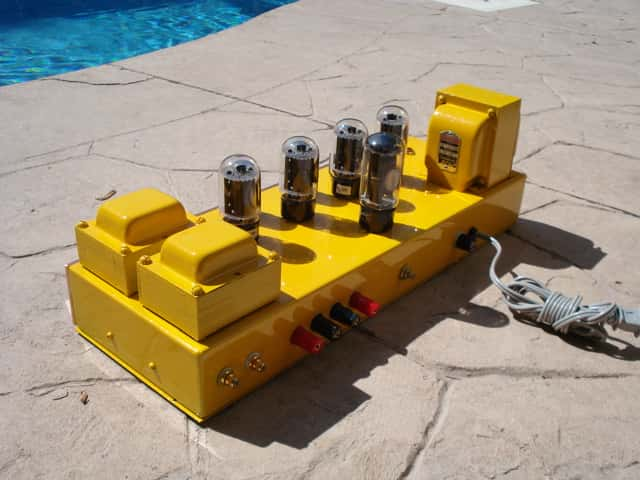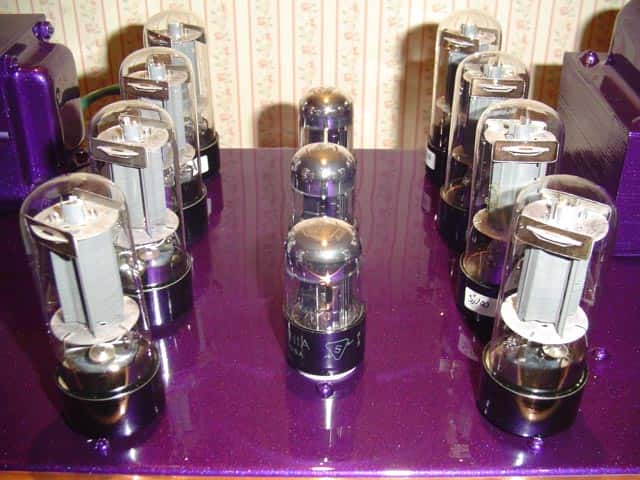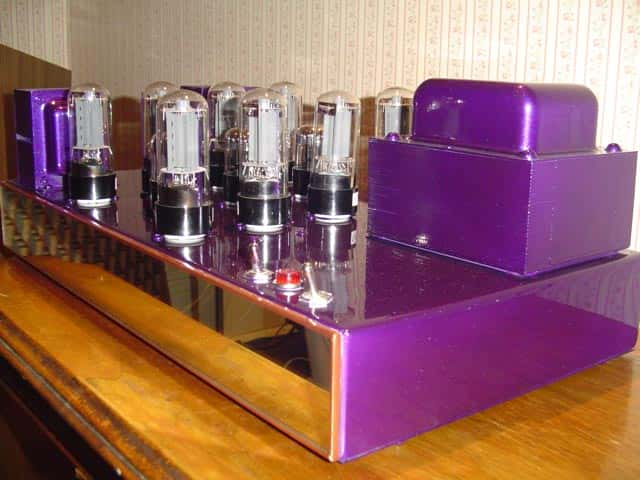For those of you wanting to hear just how good a custom built vacuum tube amp or console stereo will sound, here’s a video from Steve at Custom Tube Art which shows the workmanship of his projects and the quality of the sound.
Steve had this to say about his latest project:
Here is a 1960’s style custom console stereo I built displaying the vacuum tube amplifier right next to the Garrard type A turntable. The 807 tube amplifier has a conservative output of 30 watts per channel and uses 6SN7 and 12AU7 pre amp tubes. The speakers are a pair of Jensen 15″ drivers and a pair of DeForest 3″ tweeters in each cabinet. The entire project took two months to build.
You can see more of Steve’s custom work on his Vacuum Tube Amp web site.


